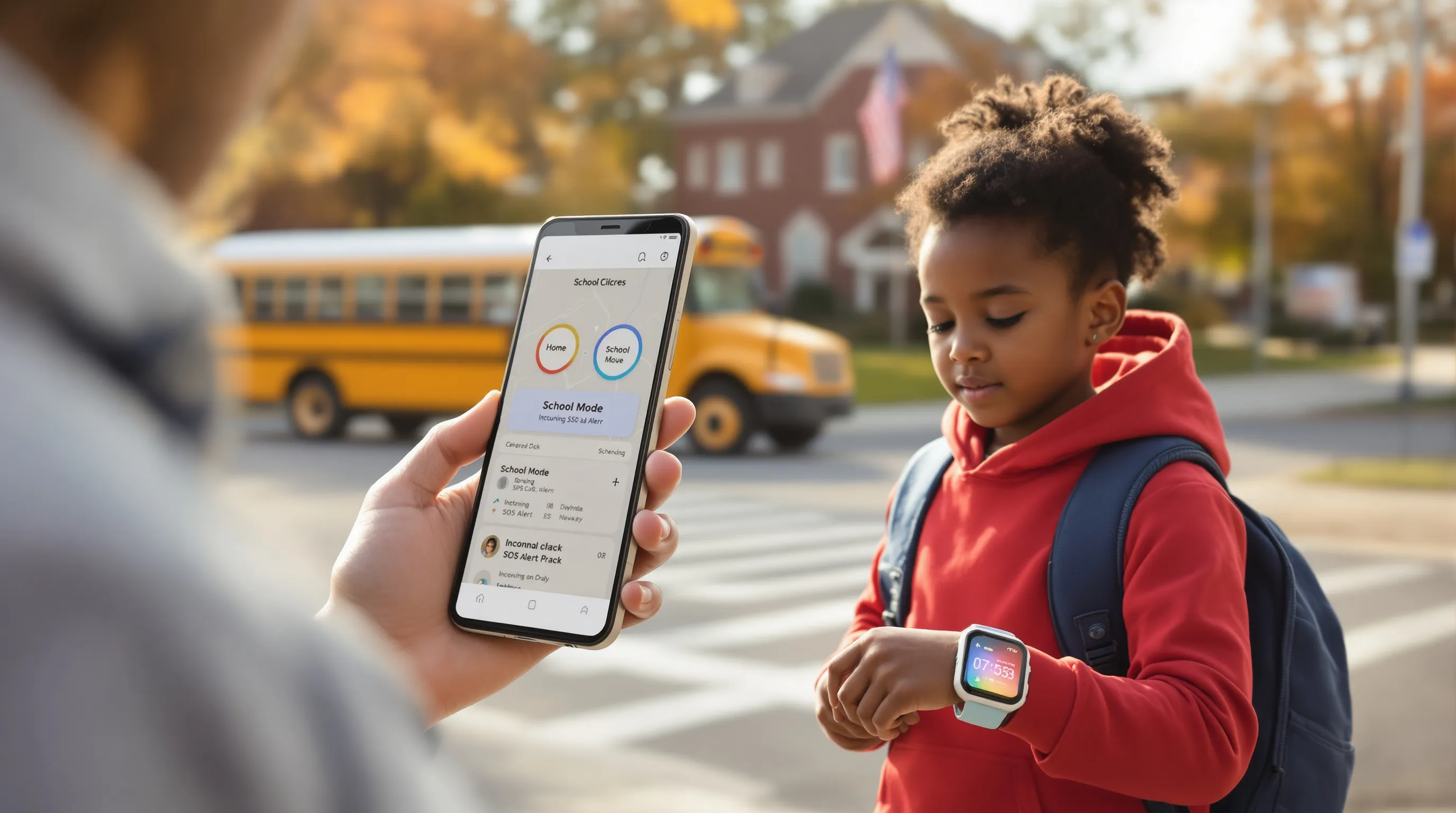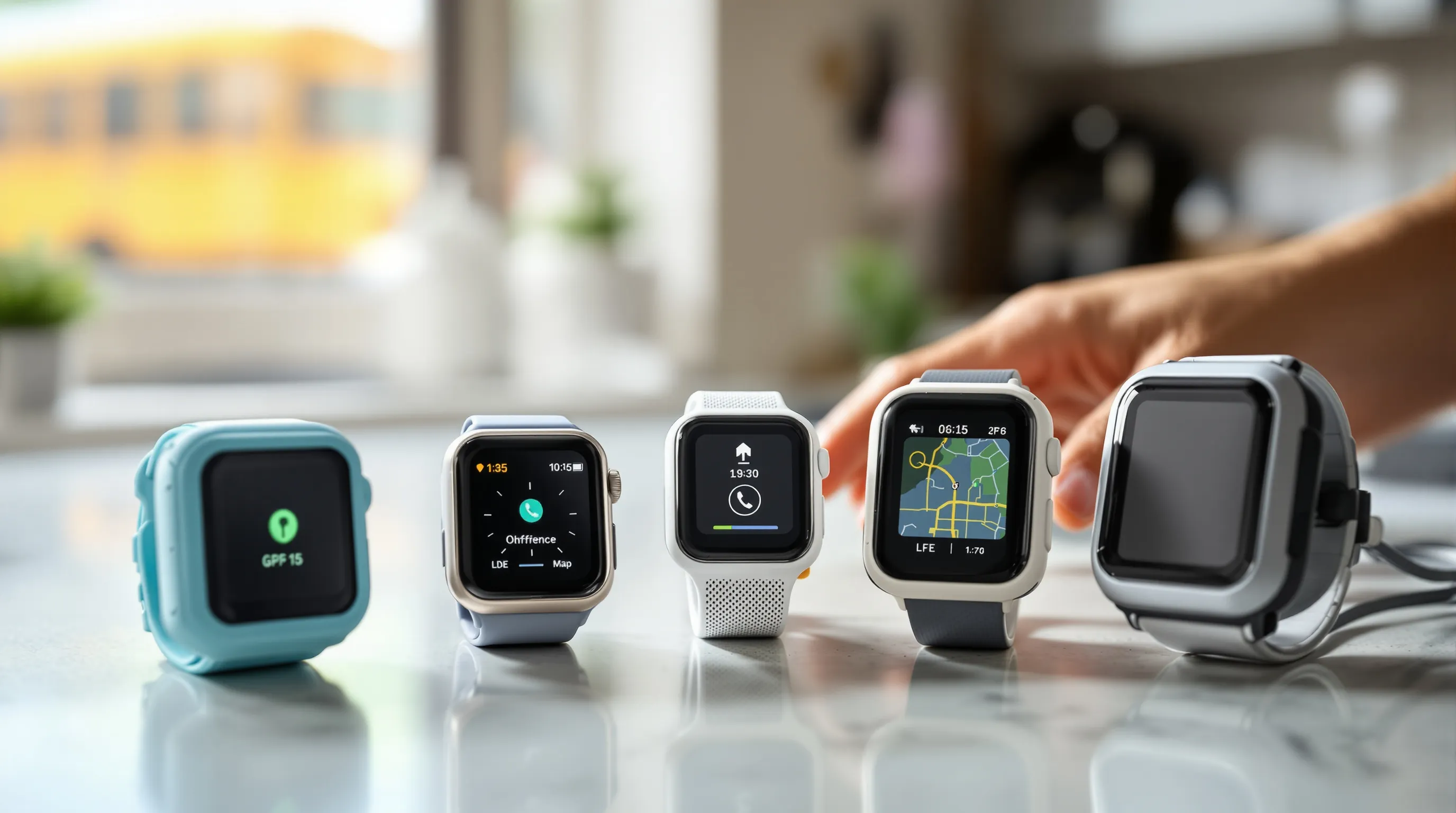If you’re shopping for a GPS watch tracker for child safety, you’re probably trying to balance peace of mind with real-world limits. We’ve lived with these wearables, tested them on school days, park trips, even the chaos of a children’s museum, and learned where they shine and where they stumble. The short version: a child’s GPS tracker watch can show you where your kid is, let them call you with one tap, and keep distractions low at school. But accuracy shifts indoors, battery life depends on how often the watch reports location, and coverage dead zones still exist. This guide breaks down how they work, what to expect, and how to set one up right on day one.
What A Child’s GPS Tracker Watch Can And Can’t Do
A child’s GPS tracker watch is best at quick check-ins and fast communication. You’ll get live or interval location updates, geofence alerts when a kid leaves a safe zone, and an SOS button that can call and ping you immediately. Most models support two-way calls, basic texts, and voice notes to an approved contact list. What they don’t do: flawless indoor accuracy, multi-day battery while pushing rapid updates, or magical service where there’s no signal.
How GPS, Wi‑Fi, And LTE Work Together
- GPS is your outdoor truth teller, often within 5–30 ft when the sky is clear.
- Wi‑Fi assists indoors by triangulating nearby networks. It’s not perfect, but it’s better than guessing.
- LTE carries the data and calls so you can see real-time updates and your kid can reach you from their wrist.
Together, they create a layered location system. When GPS fades (underground garages, thick malls), the watch leans on Wi‑Fi. LTE keeps the watch connected so the app can update and calls go through. In our tests, the blend felt seamless outdoors and “good enough” indoors, with occasional drift around dense urban blocks.
Accuracy In The Real World: Indoors, Malls, And Playgrounds
- Outdoors: Typically tight, 5–30 ft, great for school pickup or the soccer field.
- Indoors and semi-outdoor spots (malls, playgrounds with shade structures): expect 15–100+ ft. You’ll usually know the general zone, not the exact bench.
- Urban canyons: tall buildings bounce signals and cause frequent location drift. It’s normal. The app might waver between two sides of a street.
We like to zoom the map out a click to avoid over-interpreting small jumps. For check-ins, it’s reliable. For “which store aisle,“ not so much.
Limits To Expect: Dead Zones, Battery, And App Delays
- Dead zones: Rural areas and thick-walled buildings can block GPS and LTE. The app may show a stale point until the watch sees sky again.
- Battery: Most watches last 1–3 days. Faster update intervals (like every 1–2 minutes) burn battery quickly: 5–10 minute intervals stretch it.
- App delays: Location updates can lag indoors or when switching towers or Wi‑Fi. A quick refresh or stepping outside often resolves it.
Bottom line: treat the watch as a safety companion, not a tracker drone. It’s great at the moments that matter, SOS, leaving a safe zone, after-school changes of plan.
Safety, Privacy, And School Policies

These devices are built for kids, so the better ones ship with parent-first controls and compliant data practices. Still, confirm the details before you buy and during setup.
Data Security, COPPA, And Parental Consent
Look for clear policies and COPPA compliance, including parental consent flows, data minimization, and options to delete your child’s data. Check whether location data is encrypted in transit and at rest, and whether the company shares data with third parties for marketing (ideally, no).
Contact Whitelists And Stranger Call Blocking
A strong parental app lets you approve who can call or message the watch. Unknown numbers should be blocked by default. Test it: place a call from an unapproved number and confirm it doesn’t connect.
School Mode And Etiquette
Most watches include a tamper-resistant School Mode (aka Quiet Hours). It silences calls, disables games, and locks screens except for SOS. Coordinate with your school, share the plan, show them the mode, and set hours that match the bell schedule. Good etiquette: no wrist-raising during class unless it’s an emergency.
Choosing A Child’s GPS Tracker Watch: Features Checklist

You don’t need everything, just the right mix for your kid’s age, your routines, and your coverage area. Here’s how we evaluate a GPS watch tracker for child safety.
Location Tools: Geofences, SOS, And Live Tracking
- Geofences: Create home/school/playground “safe zones” and get alerts for arrivals/departures. Two or three zones are enough for most families.
- SOS: A dedicated button that calls primary contacts and sends a location blast. Test this weekly.
- Live tracking: On-demand or continuous tracking. Use continuous sparingly to protect battery.
Communication: Calls, Voicemail, And Texts
- Two-way calling with a whitelist is non-negotiable.
- Texts/voice memos help kids who aren’t ready to type.
- Look for noise reduction and a speaker loud enough for a playground. In our tests, louder watches made the biggest real-world difference.
Build And Battery: Waterproofing, Bands, And Charge Time
- Water resistance: At least splash/sweat proof: higher IP ratings are better for poolside spills.
- Durability: A raised bezel or bumper helps against playground scrapes.
- Battery: 1–3 days is normal. Fast charging that hits 50% in ~30 minutes is a plus.
- Comfort: Soft, replaceable bands matter. If a watch isn’t comfy, kids “forget” to wear it.
Plans And Compatibility: eSIM, LTE Bands, And Subscription Costs
- eSIM/LTE: Ensure the watch supports your carrier’s LTE bands and that coverage is solid where your child spends time.
- Plans: Expect a monthly subscription for data and calling. Budget for taxes/fees.
- App ecosystem: The parent app should be stable, with clear maps, reliable alerts, and exportable logs.
Age-Based Picks: 5–7, 8–10, And Tweens
- Ages 5–7: Keep it simple, big SOS, a couple of contacts, strong school mode, lightweight body.
- Ages 8–10: Add more contacts, geofence variety, better speakers, and activity goals.
- Tweens: Lean toward premium, stronger battery, more independence features, and better water resistance. If your tween commutes, prioritize LTE reliability and faster charging.
Pro tip: Try the watch over a full week before relying on it. You’ll spot coverage quirks and can tune the settings accordingly.
Setup And Day-One Checklist

A thoughtful setup turns a good device into a reliable safety tool. Here’s the process we use with every childs gps tracker watch we test.
Activate Service And Verify Coverage At Home And School
- Activate the eSIM or insert the SIM, then place a few test calls.
- Walk your child’s daily route, front door to bus stop to classroom, watching signal bars. Note any dead zones.
Create Safe Zones And Alert Rules
- Add geofences for home, school, and one regular activity.
- Set arrival/departure alerts for the primary caregiver. Keep notifications focused to avoid alert fatigue.
Configure Quiet Hours And App Permissions
- Schedule School Mode for the exact bell times.
- On your phone, allow critical alerts while muting non-essentials.
- Limit the watch’s contact list to the must-haves on day one: you can expand later.
Run A Family Drill: SOS, Calls, And Find-My
- Teach your child when to press SOS and what happens next.
- Practice a full loop: child presses SOS, you receive the alert, you call back, and you navigate to the map.
- End with a “what went well/what felt weird“ chat. Adjust settings together.
Budget Vs Premium: What You Get At Each Price Tier

Price tracks features and build, mostly. Here’s a realistic snapshot so you don’t overpay or under-buy.
Entry-Level: Basic Tracking, Shorter Battery
- Pros: Affordable, simple apps, smaller cases for tiny wrists.
- Cons: Slower location refresh, weaker speakers/mics, 1–2 day battery, fewer geofences.
- Best for: First-timers ages 5–7 and backup devices.
Midrange: Better Build, Clearer Calls
- Pros: Noticeably sturdier, cleaner audio, more reliable geofence alerts, improved water resistance.
- Cons: Still dependent on coverage: battery usually 1.5–3 days depending on refresh rate.
- Best for: Most families with elementary kids who need daily reliability.
Premium: LTE Independence, Offline Maps, Extras
- Pros: Stronger antennas, faster GPS lock, sometimes offline maps and better bumpers: quicker charging.
- Cons: Higher monthly plan costs: still not a phone replacement.
- Best for: Tweens, kids with commutes, or families that want maximum independence tools.
Troubleshooting And Maintenance
Even the best GPS watch tracker for child safety needs occasional tuning. Keep these fixes handy.
Fixing Location Drift And Timeouts
- Step outside for 30–60 seconds to reacquire GPS: it often snaps back.
- Restart the watch and your parent app if the map stalls.
- Check signal: low LTE bars equal laggy updates.
- Calibrate: some watches offer a compass or motion calibration, run it monthly.
Improving Battery Life Without Losing Safety
- Increase location interval from 1–2 minutes to 5–10 minutes during routine hours: drop to live tracking only when needed.
- Use School Mode to limit background features while indoors.
- Turn off nonessential alerts and trim the contact list to reduce chatter.
- Charge nightly: fast-charge during breakfast if needed.
When To Reset, Replace, Or Upgrade
- Reset: After persistent crashes, failed updates, or corrupted settings. Backup first.
- Replace the band or charger: Worn straps cause “I won’t wear it“ battles: fresh gear helps.
- Upgrade the watch: If coverage improves with a different carrier, you need longer battery, or your child is ready for more independence (and features like better waterproofing).
Conclusion
A childs gps tracker watch isn’t a cure-all, but it’s a practical safety net when set up thoughtfully. Prioritize strong LTE coverage, simple SOS access, and dependable geofences. Expect indoor drift and plan for nightly charging. Most importantly, involve your kid, teach the tools, run drills, and keep settings lean. Used this way, a GPS watch tracker for child safety does exactly what you want: it keeps you connected without hovering.
